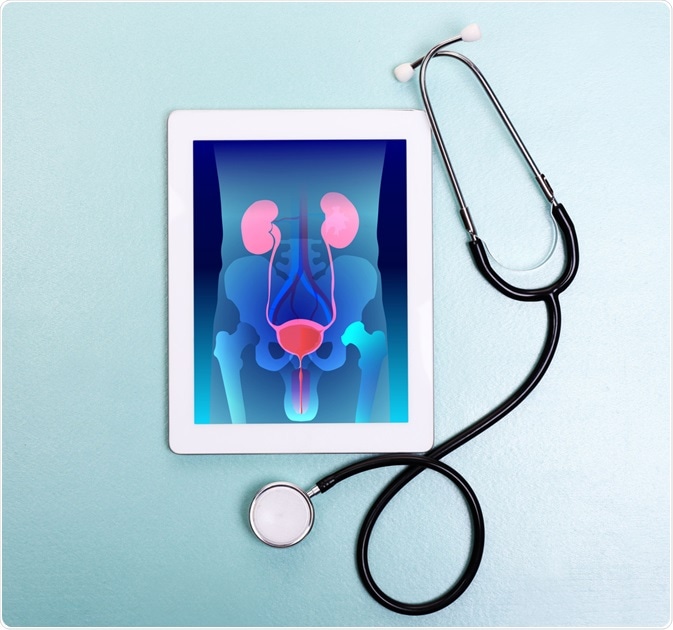Urodynamic tests are used to examine the function of the bladder, sphincters, and urethra to store and release urine. There are various types of tests that may be needed, depending on the specific case at hand. These include simple observation tests, as well as complex examinations with specialized equipment.

Image Credit: Africa Studio / Shutterstock.com
Uroflowmetry
Uroflowmetry measures the rate and volume of the urine flow, using a specialized device that catches the urine and records the data in a computer.
Typically during a uroflowmetry test, the patient is asked to urinate in a private area into a toilet with a container to collect and measure the urine. The device automatically graphs the urine flow rate each second, providing valuable information about the highest flow rate and how long it takes to reach this. The results of the uroflowmetry test reflect the strength of the bladder muscles and indicate if there is any blockage to the urine flow.
Alternatively, a crude method to measure the urine flow is sometimes used, which involves recording the time it takes to urinate into a container that can weigh the urine.
Post-void residual volume
The post-void residual volume test measures the amount of urine that remains in the bladder after urination. This is usually measured with ultrasound equipment that is able to view the bladder and the liquid inside. This test may be performed in a variety of settings, such as the general practitioner’s office, a hospital, or radiology clinic, provided that the ultrasound equipment and a specialist to read the results are available.
Alternatively, a catheter may also be used to measure the post-void residual volume. This involves the insertion of a thin and flexible tube through the urethra and into the bladder to remove the remaining urine. Local anesthesia is usually required for this procedure.
A healthy individual should have a post-void residual volume of fewer than 100 milliliters (ml), indicating that the bladder is able to empty almost completely.
Cystometric test
The cystometric test is used to measure the volume of the bladder, the pressure inside the bladder, as well as the volume when the urge to urinate initiates.
The test involves the use of a catheter to empty the bladder, as well as an additional small catheter with a manometer to measure the pressure present within the bladder. After the complete emptying of the bladder, it is slowly refilled with warm water and the patient is instructed to note when the urge to urinate begins, at which point the volume and pressure are recorded.
Leak point pressure measurement
The leak point pressure test is used to determine the pressure of the bladder when it leaks due to the sudden contraction of the bladder muscles. Similar to the cystometric test, this test involves the insertion of a manometer into the bladder to measure the pressure and gain information about the function of the bladder.
Pressure-flow study
The pressure-flow study test is used to measure the pressure of the bladder when urinating. This information is useful in identifying whether a blockage is present within the renal tract. The pressure-flow study test involves the use of a manometer to record the pressure and flow rate as the patient relieves himself or herself, following a cystometric test.
Electromyography (EMG)
An EMG is used to measure the electrical activity in the neck of the bladder and the tightness of the urethra. This test involves the use of specialized sensors to measure the activity of the muscles, nerves, and sphincters, which is useful when nerve or muscular damage is a likely cause of urinary symptoms.
Video urodynamic tests
Video urodynamic tests use visual recording mechanisms to monitor the filling and emptying of the bladder. This may include imaging techniques such as X-ray or ultrasound scans.
References
Further Reading
Last Updated: May 17, 2023